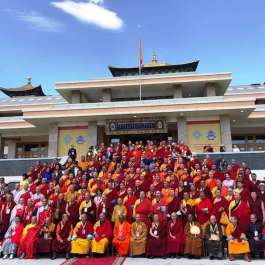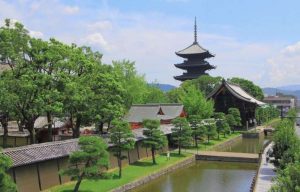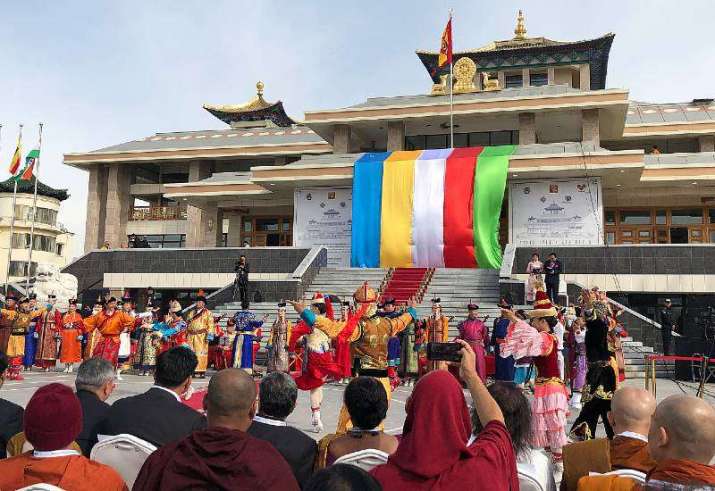
Photo by the author
International delegates from Asia and Europe gathered in the Mongolian capital Ulaanbaatar for the third Samvad conference from 6–8 September. Organized jointly by the Vivekananda International Foundation (VIF), Gandan Tegchenling, Ulaanbaatar’s most important Buddhist monastery, and Mongolia’s Institute of Strategic Studies, this year’s Samvad was held in association with the Japan Foundation, the International Buddhist Confederation (IBC), and the Mongolia-based Asian Buddhist Conference for Peace (ABCP). The occasion was formally titled “Samvad III: Global Buddhist-Hindu Initiative on Conflict Avoidance and Environment Consciousness.”
The Samvad series has been ongoing since 2015, when Indian and Japanese prime ministers Narendra Modi and Shinzo Abe began working together to articulate a distinctly Buddhist approach to soft diplomacy, a form of quiet diplomacy for countries with Buddhist majorities. The event was also one of national importance for Mongolia, a strategically important node in the unofficial alliance of Buddhist democracies that India and Japan have been patiently building for four years. Mongolia and Myanmar (host to the second Samvad conclave in 2017) are the most prominent countries connected to India and Japan by the Samvad node. Countries in this orbit include South Korea and Bhutan, as well as Tibetan monastic leaders from Dharamsala and Himalayan regions such as Ladakh.
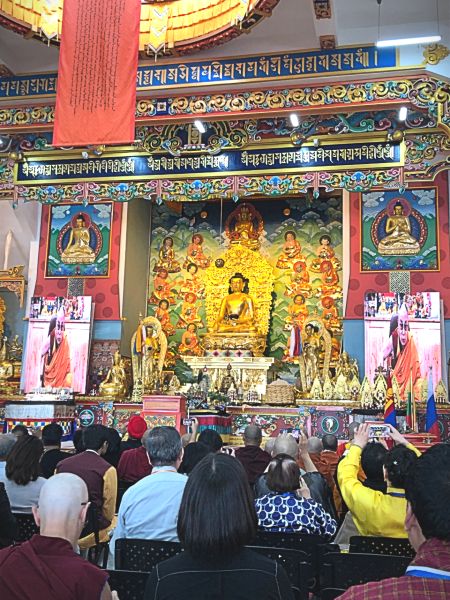
Assembly Hall on 6 September. Photo by the author
This year’s Samvad was timed to coincide with the opening of the new Battsagaan Grand Assembly Hall at Gandan, which has a multi-purpose structure for religious events on the third floor, exhibition and conference spaces on the second floor, and a reception hall on the ground floor. Many residents from around Ulaanbaatar and beyond attended the inauguration on 6 September, with the delegates welcomed by a series of cultural performances highlighting Mongolian long song, orchestral music, khoomii (throat or overtone) singing, and folk dancing. Nepalese Buddhist singer and activist Ani Choying Drolma also gave a performance of her distinctive Dharma chanting.
The ceremonial opening of the Grand Assembly Hall’s doors was succeeded by a succession of speeches by the religious and political stakeholders of this event. The abbot of Gandan, His Eminence Khamba Lama Gabju Choijamts Demberel, gave a keynote that was followed by a speech from the prime minister of Mongolia, Khurelsukh Ukhnaa. Swaminathan Gurumurthy, chairman of the VIF and director of the Reserve Bank of India, highlighted the Indian perspective on conflict avoidance and environmental awareness. Both Modi and His Holiness the Dalai Lama gave separate, pre-recorded speeches felicitating the conference. The Japanese ambassador to Mongolia, Takaoka Masato, delivered a text address from Abe, stressing the common goals, shared values, and democratic ideals of countries in what India and Japan see as “the Indo-Pacific” region.
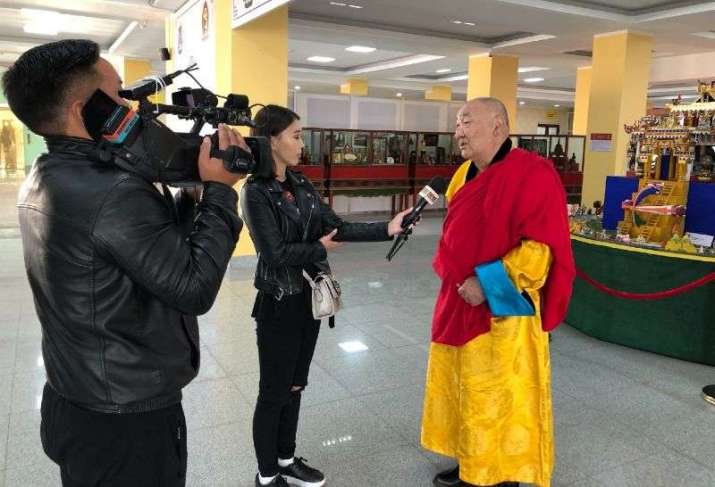
Photo by the author
Plenary sessions featured on 6–7 September, with papers on the themes of peaceful coexistence, interreligious understanding, and interdependent sustainability. A dinner was hosted by the Mongolian prime minister on 6 September, complete with Mongolian throat-singers, contortionists, and opera maestros, and a valedictory session was held on 7 September. Swami Mitrananda presided over the adoption of the “Samvad III – Ulaanbaatar Declaration,” before a final word of thanks was given by Dr. Enkhbaigali Byambasuren of the Institute of Strategic Studies.
The third day of the conference had fewer official events and consisted of a city tour of local landmarks and monuments. Chief among the sites was the Palace Museum of the Bogd Khan (1869–1924), a Mongolian theocratic and nationalist leader. The delegation was then taken to the capital’s Central Stadium, where this year’s Danshig Naadam festival and Khuree Tsam dance was being held. Forgotten for a century, the festival was revived in 2015 and has since then been held annually. The Khuree Tsam (Cham) dance is a taxing and epic ritual demanding an ensemble of song, dance music, decorative art, masks, and spiritual costumes in the service of channeling supernatural forces and offering moral instruction. A spectacular ceremony to burn away negative energies—the Sor Zalakh—was also held. Finally, the VIF hosted an Indian-style farewell dinner with performances by Mongolian and Indian musicians.
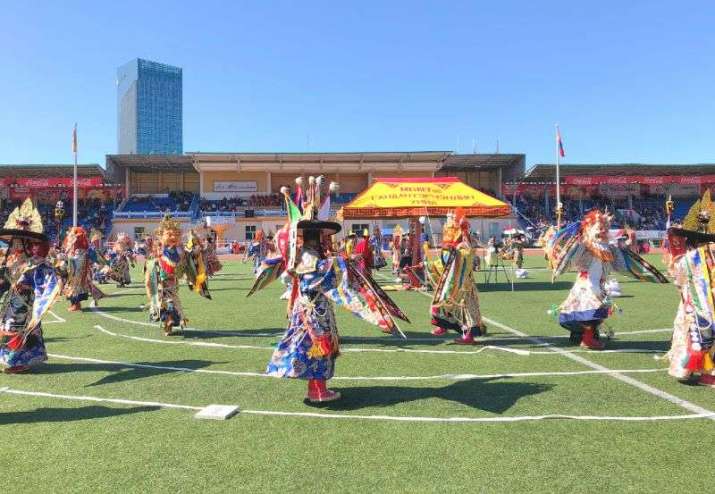
With Mongolia now an important stakeholder in the Samvad project, it remains to be seen how India, primarily through the VIF, and Japan will build on this “Buddhist alliance of democracies,” especially as it holds both domestic implications in India as well as broader international developments in Asia, including Buddhist diplomacy between nations and questions about the relationship between Buddhist and political leaders.
See more
Danshig Naadam-Khuree Tsam 2019 to be held (Monstame)
Danshig Religious Festival – Highlight of August In Mongolia (Ayan Travel)











